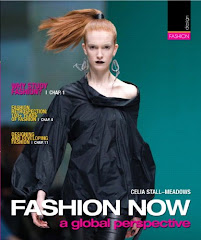Media writers often refer to a supposed hemline theory. They may cite economist Paul Nystrom or Professor George W. Taylor as the developers of this theory. These reports lack verification and historical accuracy and have continued to occur because once--a long time ago--somewhere, someone noted a phenomenon and deduced a hypothesis that was incorrectly coined a theory.
The inaccurate information is as follows:
Stock prices move in the same direction as women's hemlines; ie: when the economy is healthy, women's hemlines shorten in a reflection of the good times. When the economy is in a recession, women's hemlines lengthen to reflect the depressed attitudes. Media writers have given credit to Paul Nystrom and George W. Taylor for this concept. In reality, neither this researcher, nor the librarian at Professor Taylor's former university (Lippincott Library, Wharton School of Business) can locate the original source of this erroneous transcription. Moreover, Paul Nystrom's Economics of Fashion book was published in 1928, before the big stock market crash in 1929. Hemlines had only been above floor length for less than two decades, so there were insufficient data and testing to theorize on the topic. While both of these brilliant scholars can claim many important contributions, the stock market/hemline theory is not among them.
An inquisitive master's student at the University of Tennessee created research to test this proposition in 1971. M.A. Mabry wrote her thesis on "The Relationship Between Fluctuations in Hemlines and Stock Market Averages from 1921 to 1971." Her thesis presented instances in which the two moved hand in hand and instances in which the two did not move hand in hand (just relationships, but not cause and effect).
The burning research question is: Is there a significant relationship between hemline lengths and stock market averages since 1971? More than four decades have passed. It is time for another master's student to test the hypothesis and put this very dated and inaccurate assumption to rest, OR affirm the relationship and provide updated and accurate information for media writers to cite.
It would also be an interesting study to trace all the references to this supposed theory and work backwards in time until locating the original source of the error.
You may read more about the hemline theory myth in my textbook:
Stall-Meadows, Celia (2011). Fashion Now: A Global Perspective. NJ: Pearson.
Wednesday, October 12, 2011
Subscribe to:
Posts (Atom)


